As someone who is an avid reader and collector of books, I am pretty time-poor. I have a job, two young children and a multitude of hobbies which I try to fit in too. Because of this, I find myself drawn to short stories and collections of essays.
Beauty in Photography (1996) is a collection of essays written by Robert Adams in which he explores photography’s place in art and questions his own assumptions and feelings. This is a collection of 8 essays although the final 3 are collected under one heading. I wanted to discuss and debate the first 5 of his essays.
I both loved and felt disappointed with this book. There were many moments whilst reading this that I had to get a pencil and mark out quotes that struck me but equally I found myself getting to the end of an essay and feeling like there was so much more to say, that it had ended too quickly without delving deep enough. Equally I will say that I disagreed with some of his conclusions, but I think that is not necessarily a negative, in art opinions are always divided. Can a body of work be good art if it doesn’t spark debate?
My biggest disappointment in this book though is the quality of the pictures. It perhaps keeps the cost down, printing the way they have, but to me it’s surprising that in a book exploring beauty in photography and photography’s place in art, the example images are so hard to make out. If I had the freedom to remake this book in any way that I wanted, I would make the example images full page and as high quality as I could pull from the original. Images that people could pour over and contemplate as they read the essays.
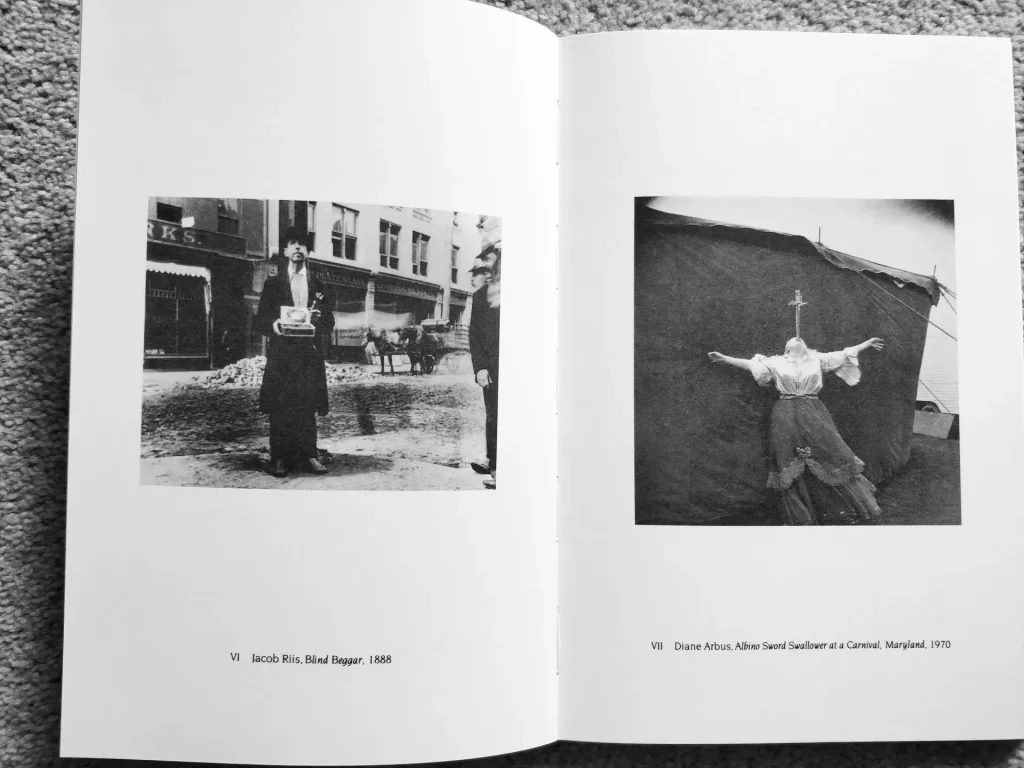
Without further ado, let’s look at the essays.
Essay 1 – Truth and Landscape
“The beautiful places to which we journey for inspiration surprise us by the melancholy they can induce.” (Adams, 1996: 13)
In this essay Adams is questioning what makes a good landscape image and I will say I rather liked this first essay, it was a strong opener.
We talk here about how a landscape picture, whether painting, drawing or photograph, should offer geography, autobiography and metaphor. I found this to be an interesting statement and one I can agree with. I am not really a landscape photographer myself, I can appreciate a good image but I often feel uninspired in my own attempts. I’ve never particularly explored what I felt constituted a good landscape past the ideas of composing the lines and shapes within the image, so it’s interesting, to me, to have a theory put forward.
He goes on to talk about the photographer’s presence in the image and by this he is referring to the photographer’s influence over the resulting image. The use of filters, the framing, etc… will be unique to the individual artist, like a stamp, it marks their presence in the image. A very interesting point to make, another that I hadn’t considered and links to the idea that we can emulate another artist that we admire but our own presence will ensure that it is in some way different. Equally, it explains why we feel bored when we see images that have been done over and over again. At the time of writing the essay, social media did not exist and so Adams could not draw on that as part of his research but I’m sure most people reading this can think of plenty of times they’ve seen a cliche image appear on their feed (illuminated tent under a starlit sky? Legs sticking out the back of a truck with mountains in the background?) and no matter how beautiful the picture, no matter how technically perfect the shot, it doesn’t spark much passion. If you are interested in the idea of social media cliche, a fantastic account to follow on instagram is Insta_repeat which collates images from other accounts into collages of similar content.
Adams further explains that without the presence of the photographer we are looking at a clinical image, almost a snapshot, one taken solely to record the geography of a place and therefore omitting autobiography and metaphor. These images are not likely to hold our attention even if the landscape itself is very beautiful.
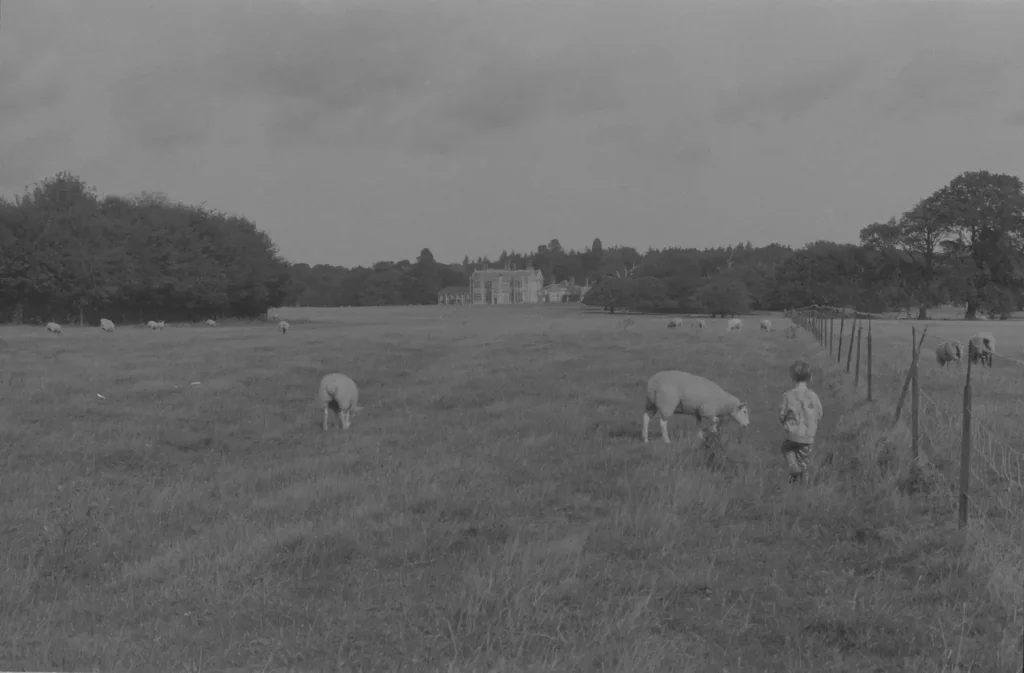
I don’t have many landscapes to choose from to apply these arguements. In the example above we have geography showing the area around Felbrigg, a National Trust property near me. We have autobiography, this is showing a day on which my sister and I took my children for a day out. And we have metaphor, here my son is delighting in and learning about nature, animals and their reactions to him, perfectly capturing why I moved away from the city to raise my children in the countryside. Whether it’s a beautiful image, I’m not sure (but that might be because I wasn’t happy with this film)
As I say an interesting read for someone who is not a landscape photographer. I’d be really interested in hearing the opinion of other landscape photographers on this essay.
Essay 2 – Beauty in Photography
“I have since learned, however, that the word beauty is in practice unavoidable. Its very centrality accounts, in fact, for my decision to photograph. There appeared a quality – beauty seemed the only appropriate word for it – in certain photographs and paintings that opened my eyes, and I was compelled to learn to live with the vocabulary of this new sight, though for many years I still found it embarrassing to use the word beauty, even while believing in it.” (Adams, 1996: 24)
I used to say, in years gone by, that I preferred beauty in my images to political messages. Whilst this was true, I think it is a concept that I had not fully explored. I couldn’t tell you what I meant by beauty, and I also wouldn’t have been able to respond, if asked, why I felt that beauty and political messaging (or metaphor) were mutually exclusive. To expand on my use of the term political messaging, I’m referring to an image having a story that presses an issue such as about racial inequality, climate change or issues with gender and sexuality rather than meaning specifically images about politics.
One of the things which I have really enjoyed about this essay is the way in which he defines beauty. He talks of how form is beautiful, in photography, this may be our use of shapes, lines or repetition and that the way in which we compose to capture form is a way of showing order in the chaos that is life. It’s subtle suggestion is that there is meaning to life, that things happen for a reason.
“How, more specifically, does art reveal Beauty, or Form? Like philosophy it abstracts. Art simplifies. It is never exactly equal to life. In the visual arts, this careful sorting out in favor of order is called composition.” (Adams, 1996: 25)
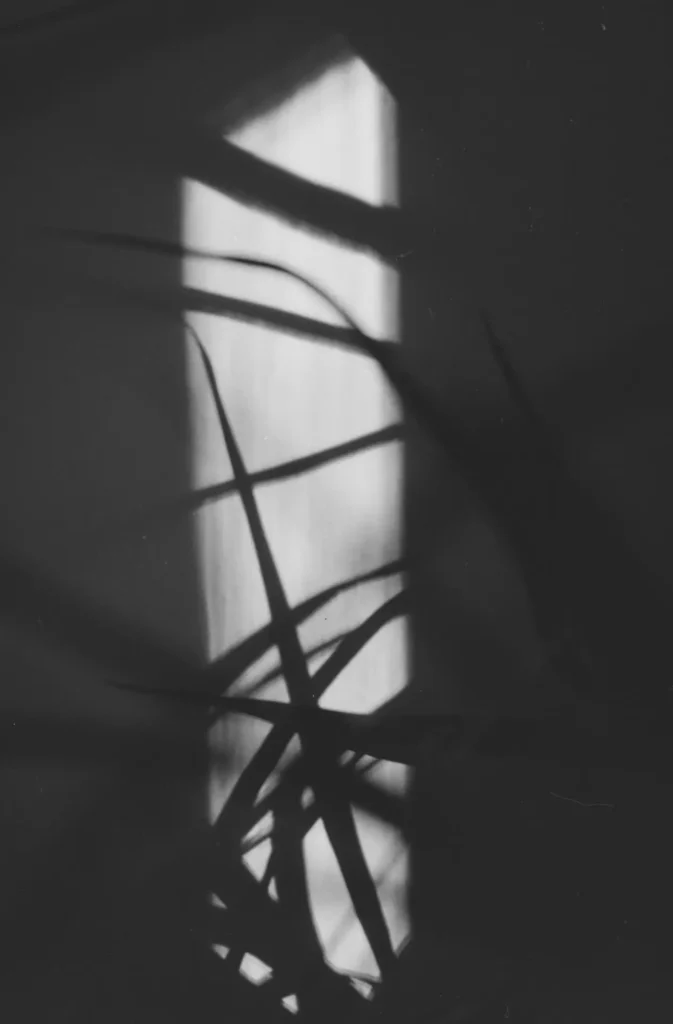
This image here, to me, is a sorting out of chaos to find beauty. At the moment I took this picture, I was surrounded by noisy children, the dog whinging for her dinner and I was fed up. I just noticed the way the setting sun was casting this shadow on the wall from a houseplant. I knew that it wouldn’t last very long, the sun seems to move so quickly as it goes down. I ran and got the camera took the shot and then it was over and I was back to daily life. To me this is composition, this is choosing what to include in the frame. I could have shot the image from across the room and captured the chaos with this beautiful little shadow in the background. But it would have been lost, I chose to make the beauty the subject.
I’ve long been fascinated by the idea that one of the things which makes us human is our desire for meaning in life. That religion, the quest to explore the universe and our inherent ambition is about wanting to find meaning, it’s what connects us but equally what causes us to fight amongst ourselves. Because of this, I found this idea that beauty is about form and that in turn is about meaning in life very interesting. A topic which I hope to explore further myself at some point.
Jumping to the end of the essay, Adams explores whether an image needs to be beautiful, his example being photojournalism. Another interesting topic which comes up in a later essay (Photographing Evil), and a point is made there that the photographers in war zones and other hard hitting areas sometimes feel disgusted with themselves for trying to compose the image. In this essay they use Robert Capa’s image of a Spanish loyalist falling as he dies. A pleasing composition when broken down but a terrible subject matter. In that later essay, Adams goes on to talk about how important the composition can be. A pleasing composition can make an image more effective in its intended use, whether that is a political campaign or a newspaper, we are more likely to take note of an image if the photographer has used an effective composition. Another interesting topic to be explored.
And now for the most controversial part of the essay, Adams begins to talk in a way that suggests certains types of images, such as abstract or still life images are not beautiful, in his words “invention is so laborious as to be perverse” (Adams, 1996:26).
“We need only to examine a copy of a mass-circulation photography magazine. Most of the pictures suggest embarrassing strain: odd angles, extreme lenses and eccentric darkroom techniques reveal a struggle to substitute shock and technology for sight.” (Adams, 1996: 29-30)
Do you agree with his thoughts? Personally I find it to be a little ignorant. However, that could be the fact that I am talking as someone living over 40 years after these essays were written and I have the benefit of seeing the amazing work that artists create in photoshop, using darkroom techniques and by using unusual angles to frame their images. But the darkroom and perspective possibilities were available then, so is it instead preference?
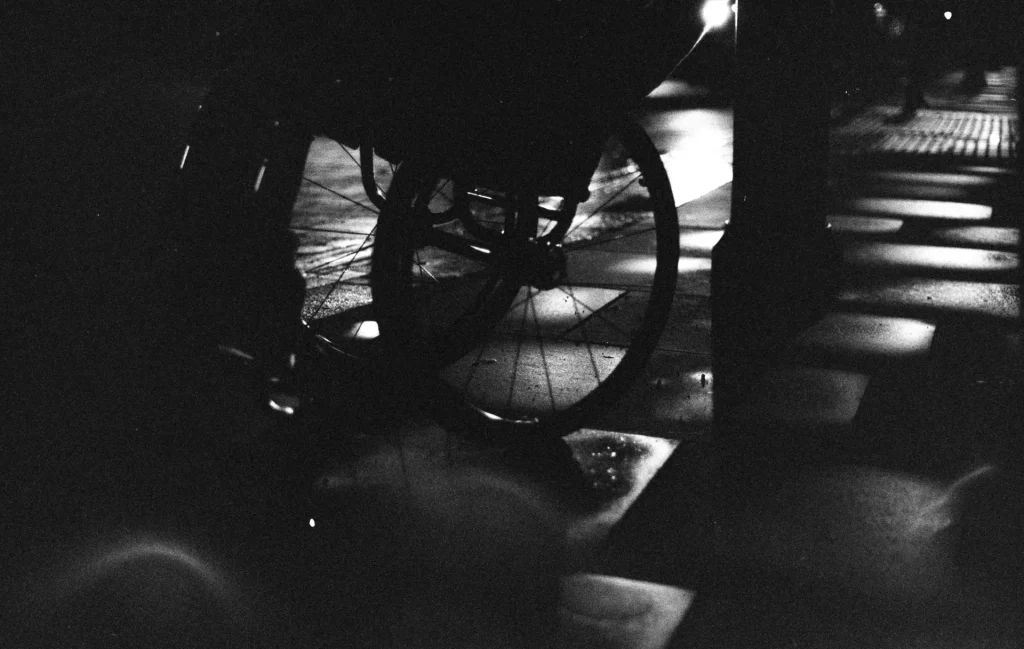
Above is an image of mine that I think Adams would despair of. Here I have used an odd angle and extreme lighting/pushing my film to the extreme to acheive this look. I rather like its abstractness and I this is why I don’t agree with Adams.
I’ve mentioned before that Adams is a landscape photographer and I really feel that this influences much of his written work; it’s interesting to read it as someone who prefers the experimental and abstract. I’m also going to include a link to a review written in 1996 when this collection came out. One of the members of my new Facebook group shared it during one of our debates and it made for interesting reading as it goes into Adams being a traditionalist in his thinking of beauty and how that in itself is outdated and old-fashioned.
Essay 3 – Civilising Criticism
“It is harder in photography than in painting to establish a recognizable style; this leads to desperate efforts to establish a style at any cost and in turn to the creation of technically accomplished but otherwise empty pictures that anger those who must write about them.” (Adams, 1996: 52)
A quote from this essay which really brought me back to the article that I wrote for 35mmc (here) in which I describe my efforts in a digital photography course. I wasn’t trying to find a style but I was creating technically fine imagesthat felt lifeless and devoid of meaning.
I’m sure I’m not the only one who would say that it annoys me when photographers (amateur or otherwise) think that shooting film automatically makes an image good. I’ve seen plenty of images that bore me beyond words but which the photographer thinks are edgy just because they have a film aesthetic. Something which Adams didn’t have to contend with when he was writing these essays in the 1970s. I will even go as far as to say that I feel offended when friends, with the best meaning, look at my work and talk about its merits purely from the point of view that it was taken on film. It makes me wonder whether my images have nothing else going for them other than the medium on which they were made. This leads nicely into the next quote I wanted to share.
“David Smith, the sculptor, wrote in bewilderment in his journal ‘Does the onlooker realize the amount of affection which goes into a work of art – the intense affection…and total convictions?’ “ (Adam, 1996: 52-53)
I’m not sure when or why I came to understand the value of the way something is created. Not limited to art and photography; I marvel at the process for distilling Whisky, the time needed to create clothes by hand or intricately carved pieces of furniture. The earliest I can remember feeling that way was when working for The Pen Shop at Stansted Airport; the representatives for the different pen brands would come in to teach us about the latest pens (more interesting than it sounds!). I was fascinated in particular by the brand Yard O Led, if you are interested in exquisitely made objects, take a look at their pens and pencils. Their designs are made by craftsmen in England who do all the intricate motifs by hand. Understandably their pens are incredibly expensive and I was never lucky enough to sell one; customers were more interested in the brand name of Mont Blanc.
In this essay, Adams tries to break down what makes good criticism. And whilst, overall I do agree with his conclusions in this essay, he does make controversial suggestions that the young are not able to provide good critique. Ageism debates are usually reserved for the media and it isn’t often discussed but I think it is prevalent in photography, particularly film photography today. A couple of weeks ago I was browsing an art shop with my Mother-In-Law, she was interested in purchasing a print by one of the featured artists. The shop keeper, while pleasant to me, slipped up towards the end of our time in the shop and revealed her shock at my knowledge around art and photography, and my interest in the debatably laborious work of darkroom printing. She had assumed that I didn’t understand the seemingly high price of the prints and the effort that went into creating them. She explicitly said that she was surprised that at my age I had this understanding. We had a very lovely chat about the work but that was an example of ageism against me. Whilst I will agree that for most of us, age and experience rounds our opinions, I do not agree that the young are not capable of intelligent thought and critique.
Later in the essay, Adams discusses whether the biography of the artist is relevant in the critique. This is something which has been mulling around in my mind ever since I read it as I have been actively trying to find more diverse artists; those from different ethnic backgrounds, those of different sexualities and genders, etc. However, should I? Or should I be taking art at its face value. The next is a long quote but a very thought provoking one.
“Another improper standard of judgement is biography, the artist’s life. It is not legitimate to dislike Marianne Moore’s poetry because she wore crazy clothes or WIlliam Faulkner’s novels because he drank too much, and it is not particularly germane to attack a photograph because the person who made it worked for Life magazine or a university, was or was not a socialist, did or did not like Minor White, and so on. The critic Max Kozloff suggested that an introductory book on a photographer ought to detail among other things ‘the artist’s class origins’ and ‘professional contacts.’ As a general rule, it should not, the reason being that the only things that distinguish the photographer from everybody else are his pictures; they alone are the basis for our special interest in him. If pictures cannot be understood without knowing details of the artist’s private life, then that is a reason for faulting them; major art, by definition, can stand independent of its maker.” (Adams, 1996: 55)
I think my conclusion on this question is that, from a critical point of view, I agree with Adams that the biography doesn’t matter. It matters more if you are writing about the artists themselves and perhaps talking about all their bodies of work but when looking at a single image or series in isolation the artist isn’t relevant. Equally with my question on whether I should be seeking out diverse artists I think the answer is yes. The problem I am trying to address by doing so, is that these artists aren’t represented as much in the mainstream, we need to seek them out to see the work otherwise we are just seeing the work of middle class white men.
As I mentioned earlier, I do agree with Adam’s conclusions on what makes good criticism, he makes a case for clearing away the bad work to make space for the good. The difficulty is in finding someone who you would consider qualified to make that decision, afterall beauty is in the eye of the beholder. I’ve seen many works of art and photography displayed in galleries all the way to facebook groups that I think are awful but which receive praise from others. I really liked these words in summarising how to critique a piece:
“Henry James proposed asking of art three modest and appropriate questions: What is the artist trying to do? Does he do it? Was it worth doing?” (Adams, 1996: 58)
For this one, I wanted to leave a final quote which I thought was brilliant.
“There is the amply documented possibility that a critic’s judgment may be wrong. One contemporary defender of the Impressionists asserted that no newspaper had ever discovered a new figure of talent; that is a hard thesis to refute even now. There is also a tactical consideration: in cases in which there is a defensible need for making, in public, negative judgment, usually the most damaging negation is silence. It is a truism among publishers that a bad review no matter how bad is better than no review at all. True, their attitude is grounded in economics, but even looked at more seriously, a negative review usually implies at least that the issues raised by the work are important. No review implies the worst – boredom.” (Adams, 1996:57)
Essay 4 – Photographing Evil
This essay should have been brilliant, it started out so promisingly. It is concerned with our social responsibility and whether our work portrays our fundamental beliefs.
“Photographers have generally been held to a different set of responsibilities than have painters and sculptors, chiefly because of the widespread supposition that photographers want to and can give us objective Truth… But does a photographer really have less right to arrange life into a composition, into form, than a painter or sculptor?” (Adams, 1996: 68)
I think this is so true. It can be quite confusing, coming to photography, to work out what it is that we want to achieve. I have mentioned on my learning log, my realisation that photography is in fact art, something it took me a surprisingly long time to realise given my preference for abstract and experimental work. Coming to photography through digital and I think in the age of the internet (although I can’t comment on the alternative as I was born in the early 1990s) we are bombarded with information on obtaining the sharpest images, using the best equipment with the most focusing points and on and on. This adds to the realism that most photographic images give and why, the general public and perhaps many photographers feel that photographs are “real”. There is a saying “the camera never lies” but this couldn’t be further from the truth. The photographer chooses what to include and exclude from the frame, they choose which from a series of images is the one that says what they want it to and they have an ever increasing toolbox to edit their images. All this to say, a photographic image can be as abstract and painterly as you like and still be a beautiful photograph.
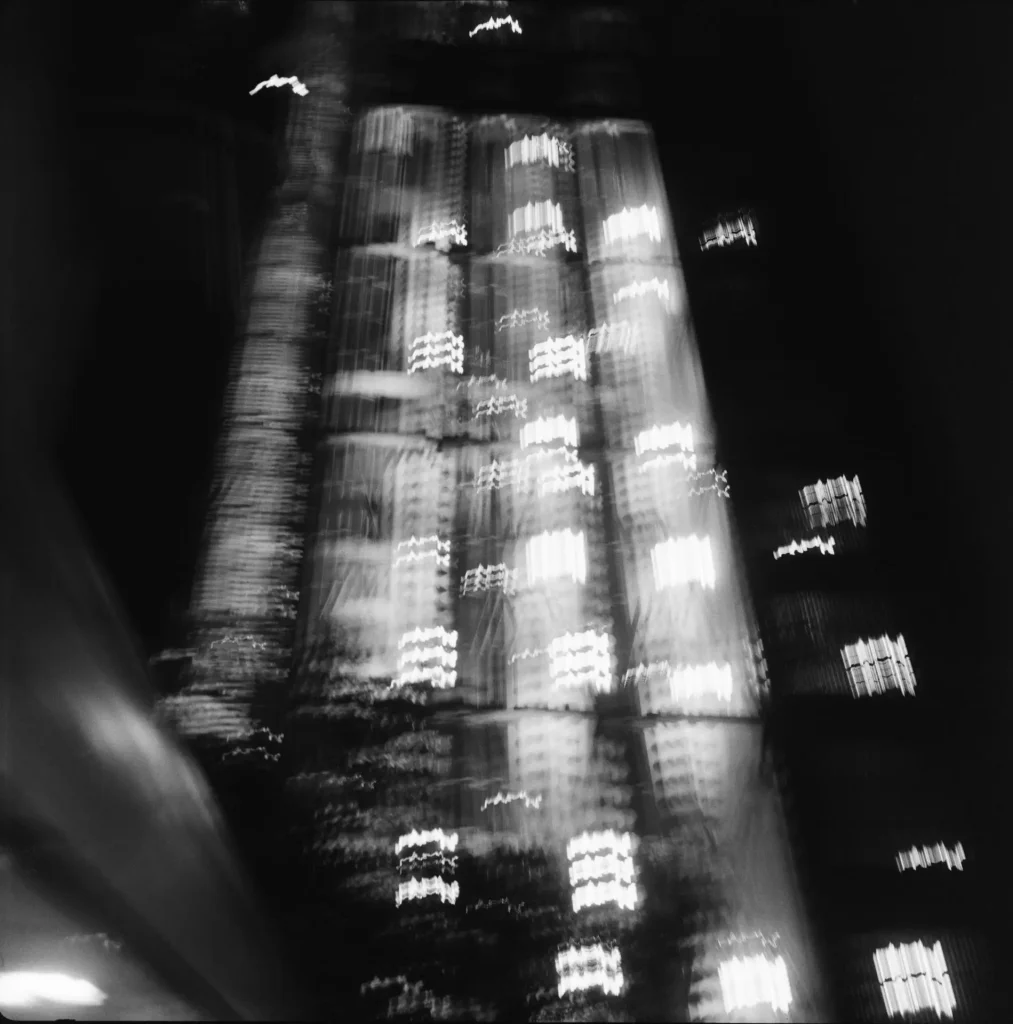
Sharing an example of my own work in which I have not opted for realism, there is no sharpness to this image and yet, to me it is beautiful.
Bringing it back to the theme of the essay, Adams claims that a single image cannot resolve our feelings around evil. For example, we cannot, in one image, tell the story of the oppression of black people in the UK. You would need a mix of media for that, or the use of narrative arts such as drama. And I love this next quote about how evil and struggle are expressed.
“Art addresses an inner struggle whereas journalism more often reports on the outward consequences of it.” (Adams, 1996: 70). He goes on to say “We owe a debt to the cameramen who worked in Vietnam, for example. Photographs like theirs encourage us to resist what evil it may be in our power to correct. Without honest reporters it would be easier to give up and to deny the complex imperatives of tragic politics – the necessity of trying to make the world better even while we learn that we will mostly fail.” (Adams, 1996: 70-71)
The Vietnam war is one of the key turning points in history where the general public were suddenly able to see the atrocities happening in war zones and under oppressive regimes across the world. Since then, the advent of the internet brings those issues, and many others, to the forefront of our minds and we see more and more art and photography, outside of the documentary, that tries to address this. Things have certainly moved on since Adams was writing this essay.
Interestingly, in the new Photography books and theory Facebook group, a mention was made of a book which looks into the concept of photographing places (landscapes) in the aftermath of an event. Such as the photographers capturing post war Germany. This book has gone onto my wish list as a bit of extension reading to this essay.
The essay moves on to talk about the act of photographing in these terrible situations. He uses W. Eugene Smith as an example, talking about how disgusted he was with himself when he realised that he was “composing” the images of dead bodies, as if they were mere shapes in his image and not human. A very interesting point is made next “…like him we then discover that if we are to continue to make pictures we will continue to make patterns of disaster (this is true even for propagandists, since badly composed pictures are as ineffective as they are puzzling: on what is the viewer to focus his concern?)” (Adams, 1996: 71).
The concept of needing well composed images for propaganda, politics, activism, etc should not be a surprise but actually I found myself noticing that I hadn’t realised this. However, I am now reading Magnum Contact Sheets and with this quote in mind I am seeing quite a few examples of the use of cropped or simply well composed frames in news articles and posters. Photojournalism is definitely not just a matter of point and shoot.
To me, this article ends too abruptly. We suddenly find ourselves at the end, feeling like there is so much more to be explored. I can’t be sure, though, whether this is because of all the information that is readily available today to draw upon or whether even in the 1970s Adams could have expanded this further.
Essay 5 – Making art new
I am not a fan of this essay. In terms of writing it felt a little too jumpy and also pessimistic. Adams makes a few controversial and even offensive statements in his quest to explore the concept of how art can be new.
“And I am worried by the amount of time spent by photographers in trying to revive nineteenth-century photographic technology. There are conceivably interesting uses to be made of almost any photographic method, but so many contemporary enthusiasts for old ways seem to place their faith simply in the value of doing the antique thing once more. The results can be momentarily charming, but they are often finally sad, a footnote to history, arcane and a little saccharine.” (Adams, 1996: 82)
Yes, he does say that there are some interesting uses, and yes technically he is mirroring my own thoughts on film photographers who think that simply by using film, their otherwise uninspiring images are good. However, he really puts this across pessimistically. In the section before he talks of how art is always drawing on what has come before, how we are interpreting, improving and learning from all the previous work that is available but then goes on to belittle an artistic technique. It’s like saying you can’t produce anything worthwhile with watercolour.
“In response to the question ‘What’s new?’ we can answer with conviction that photography is new. We can make this claim not because it was invented rather recently, and not primarily because of photography’s changing technology…, but because photography is by its nature forced toward doing the old job of art – of discovering and revealing meaning from within the confusing detail of life.” (Adams, 1996: 83-84)
Whilst this is not necessarily wrong, I do feel that Adams has a narrow view of what photography can be. I wonder, throughout these essays, whether it is because he describes himself as a landscape photographer, usually a subject matter that produces very realistic images. He seems, in this collection, as though he is ignorant of, or dislikes, artistic/experimental photography. The following quote is almost venomous and frankly suggests ignorance of the existence of photography that is purely decorative…
“In painting and sculpture it has been lethally easy to escape right off into some alleged spiritual essence, or to lounge flabbily around as ornament.” (Adams, 1996:84)
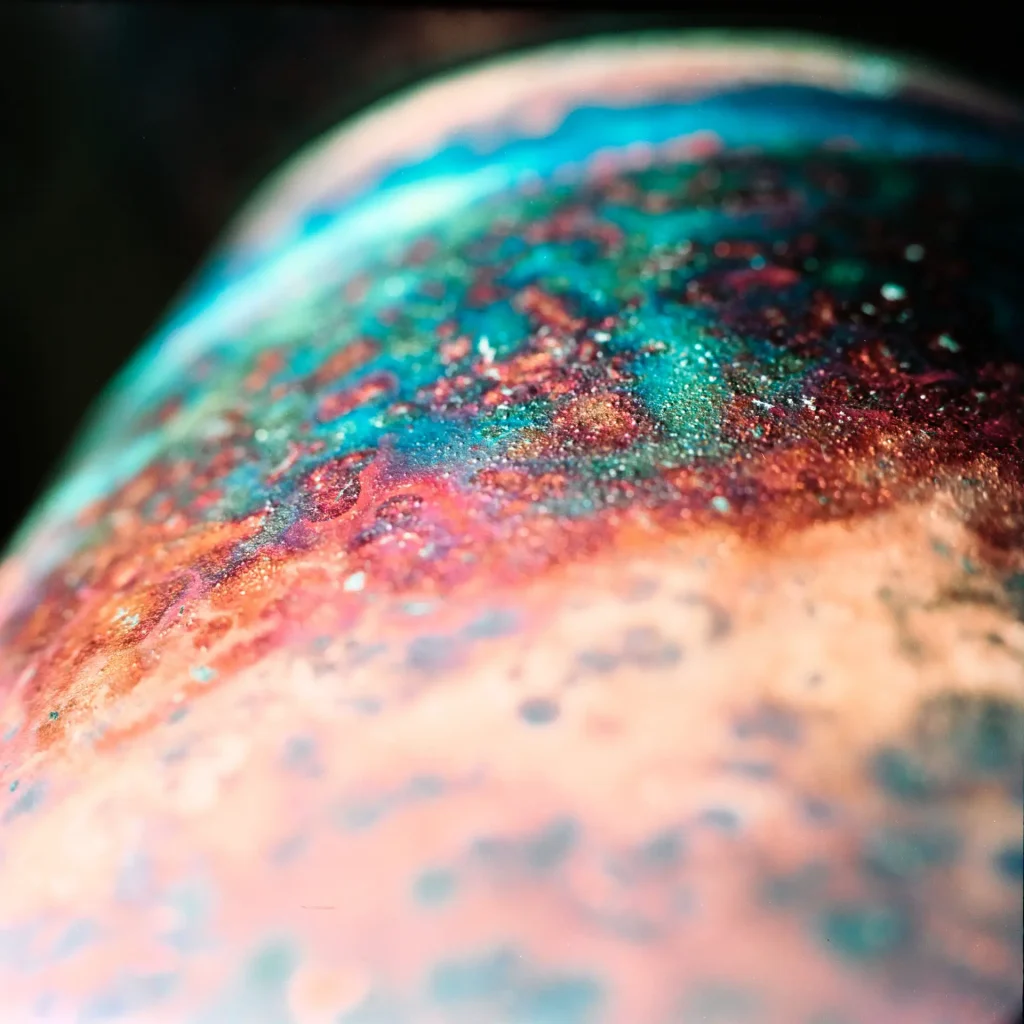
Here I am sharing an image that is ornamental in many senses of the word. I have opted to shoot a vase (ornamental) and I chose to render it abstract by using extension tunes to get in really close to the detail. I was drawn to the colours (that’s why I bought the vase!) and wanted to capture that in the light of the sun streaming through the window. I was searching for beauty. It is an ornamental image of an ornament.Does that mean it is of any less value?
It’s very hard to steer the review of this particular essay in any direction. As I mentioned it’s very jumpy, it flits from point to point without ever feeling like a deep exploration of the topic. And frankly, it does not paint a good picture of the author.
Conclusion
And so we come to the end of my review of these five essays, well done for making it this far! You may be wondering why I haven’t reviewed the final three which, as I mentioned at the beginning, fall under one heading “Reconciliations with geography”. This is because it is really a short write up of three different landscape photographers. A perfect read to get you into the work of someone you may otherwise not have known before, but for me, they didn’t exactly fit into this review of essays. I would rather find out more about each of those artists and then perhaps review their work than make any judgements based on these short introductions.
I’d really love to hear your thoughts on what I’ve said or, if you’ve read the book, your thoughts on the essays themselves. If you’re interested in this type of discussion and debate you can join our Facebook group Photography books and theory. You can follow my learning journey on my website or follow me on Instagram to see what else I’ve been up to.
Share this post:
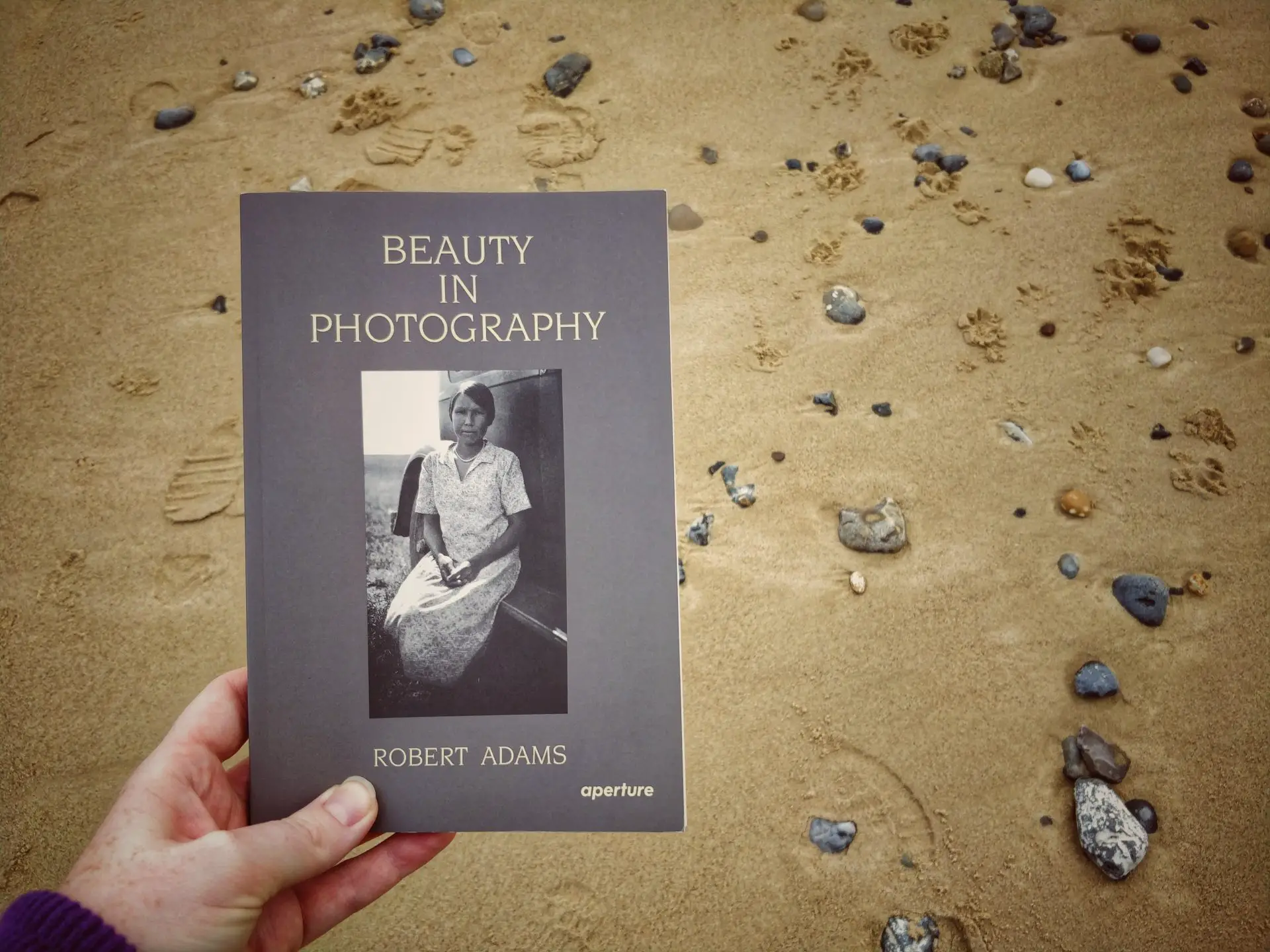
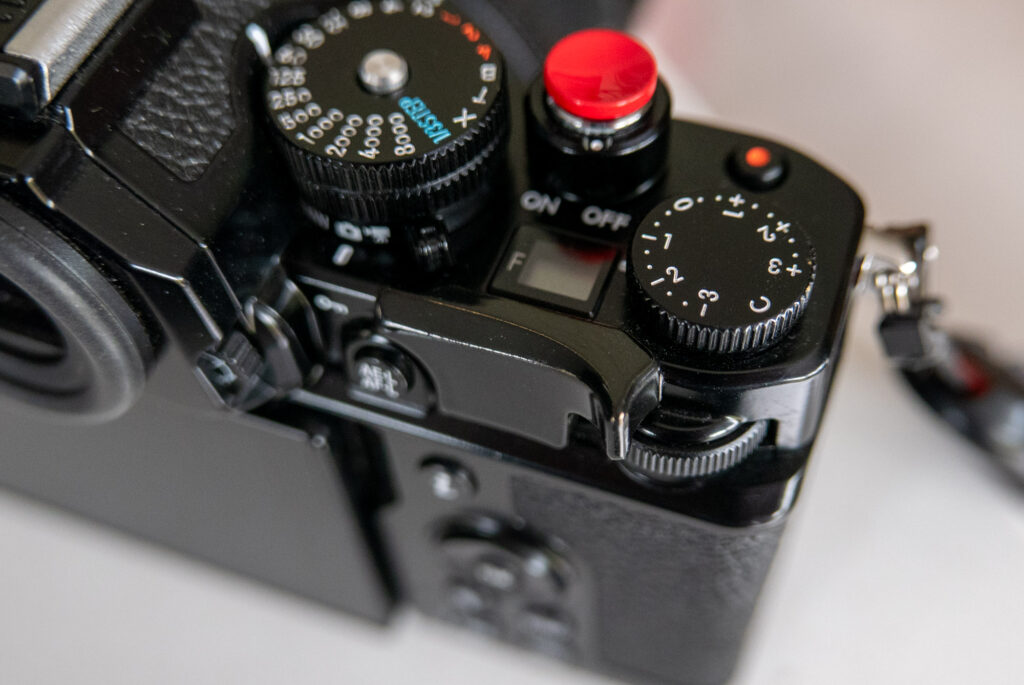
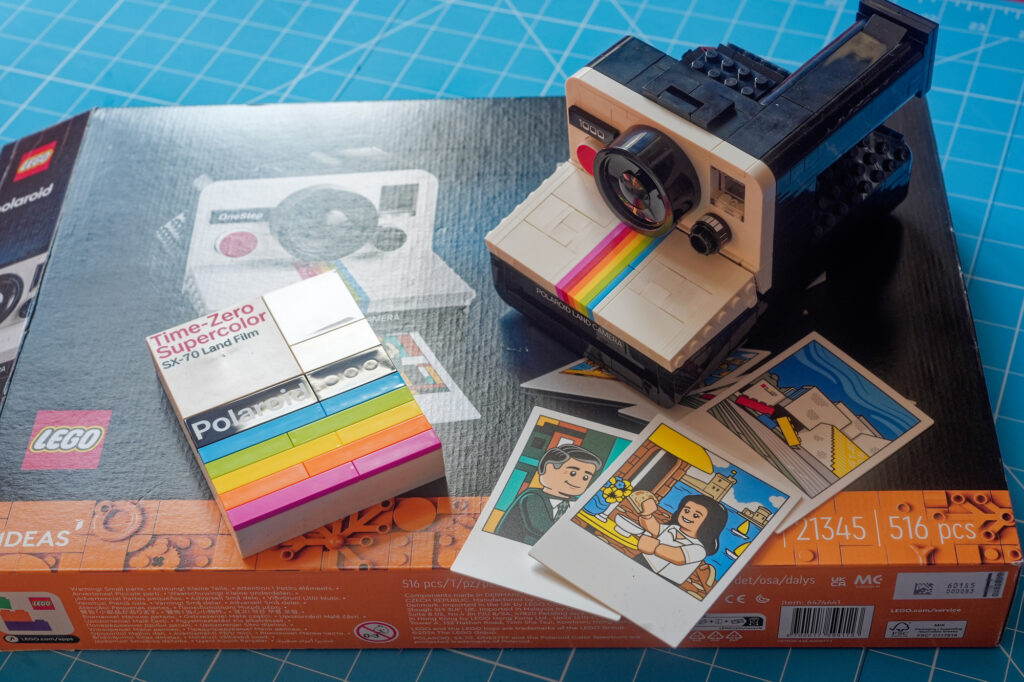






Comments
Helge on Beauty in Photography by Robert Adams – Book Review – By Holly Gilman
Comment posted: 09/12/2020
As such he should be judged.
The movement is as fraught internal inconsistency’s and nonsense as any other ism or art dogma.
That doesn’t make it without value or the artist who practices in its belief system, bad.
Everybody will always be part of an ism or vector. Especially when they think they are not.
Also, look up “continuum fallacy”. I think you enjoy adding it to your mental arsenal.
Comment posted: 09/12/2020
Alex Vye on Beauty in Photography by Robert Adams – Book Review – By Holly Gilman
Comment posted: 10/12/2020
Comment posted: 10/12/2020
Mike Kukulski on Beauty in Photography by Robert Adams – Book Review – By Holly Gilman
Comment posted: 12/12/2020
Comment posted: 12/12/2020
Brian Nicholls on Beauty in Photography by Robert Adams – Book Review – By Holly Gilman
Comment posted: 14/12/2020
And yes, beauty IS in the eye of the beholder so that's why I never enter photographic competitions. There are also two forms of wisdom - received and acquired, which alludes to your reference to ageism. Thanks and every good wish.
Comment posted: 14/12/2020
Brian Nicholls on Beauty in Photography by Robert Adams – Book Review – By Holly Gilman
Comment posted: 14/12/2020
Comment posted: 14/12/2020